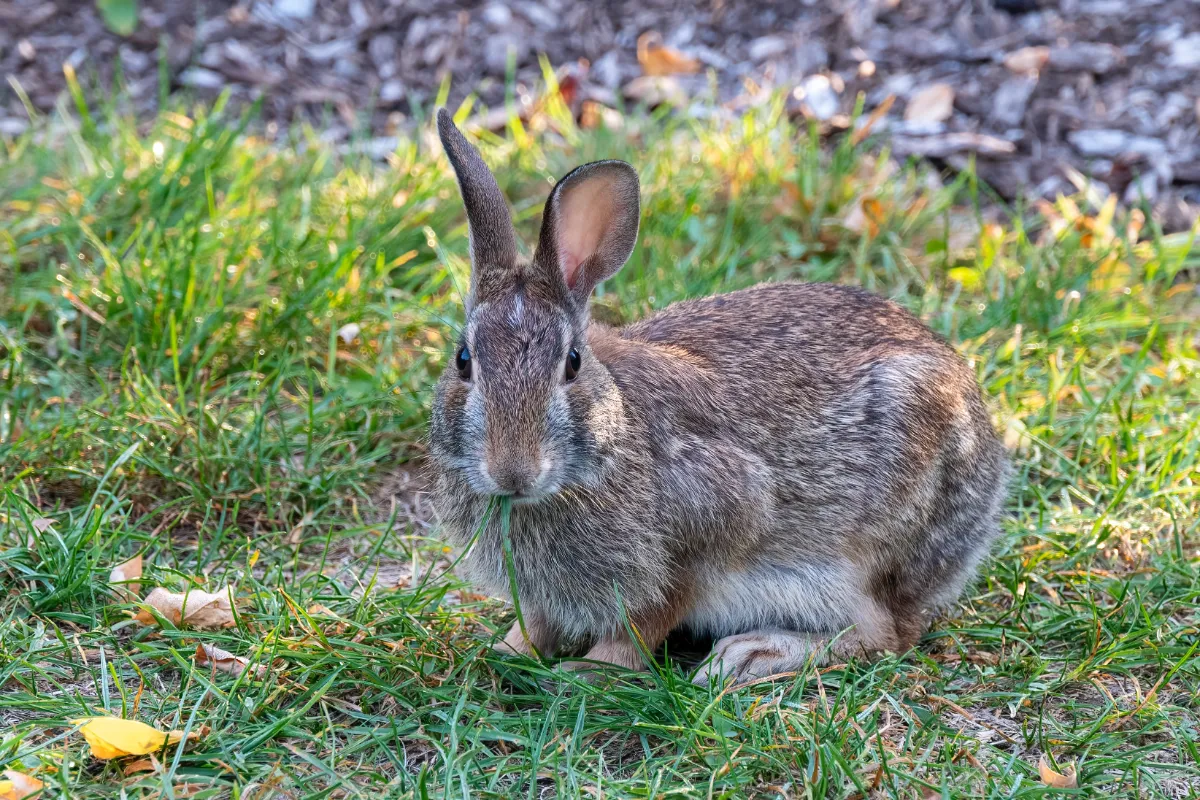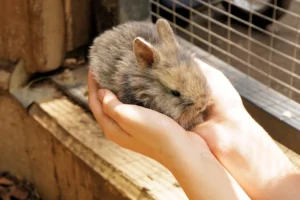Do you ever wonder what happens in the dark of night, when the moon casts its ethereal glow upon the world?
Well, let me enlighten you about the nocturnal habits of wild rabbits. Contrary to popular belief, these furry creatures are indeed active at night.
In this article, we will delve into the intriguing observations of rabbits’ nighttime activities and explore the factors that influence their activity patterns.
Get ready to uncover the secrets of how rabbits adapt to different light conditions and their fascinating relationship with moonlight.
In This Article
Key Takeaways
- Wild rabbits are active at night and exhibit nocturnal behavior.
- They primarily focus on foraging for food during the night.
- Their activity patterns are influenced by factors such as their circadian rhythm, light intensity, temperature, and predation risk.
- Moonlight plays a crucial role in enhancing their visibility, aiding in predator detection and locating food sources.
The Nocturnal Habits of Wild Rabbits
You should definitely observe how wild rabbits behave at night; they’re surprisingly nimble and quick.
Wild rabbits are known to be crepuscular, which means they’re most active during dawn and dusk. However, they can also exhibit nocturnal behavior, especially in areas with minimal human disturbance.
During the night, wild rabbits primarily focus on foraging for food. Their diet preferences include various grasses, herbs, and vegetables. They’re herbivores and have a special affinity for fresh greens.
While foraging for food, wild rabbits need to be cautious of their predators. Common predators of wild rabbits include foxes, coyotes, birds of prey, and domestic dogs and cats.
Observing wild rabbits at night can provide valuable insights into their feeding habits and their interactions with other animals in their environment.
Observations of Rabbits’ Nighttime Activities
Have you noticed how active rabbits are during the night? Their nighttime activities can be quite intriguing to observe.
Wild rabbits, like many other animals, have adapted to be more active during the darkness to avoid predators. These predators, such as foxes, coyotes, and owls, are less active during the day, giving rabbits a better chance of survival.
One fascinating aspect of their nighttime behavior is their foraging behavior. Wild rabbits are herbivores and rely on vegetation for their diet. At night, they venture out to find food, using their keen sense of smell and hearing to locate patches of grass, leaves, and other plants. They’re particularly adept at finding nutritious plants that are essential for their survival.
Observing these nocturnal activities can provide valuable insights into the behavior and adaptations of wild rabbits.
Factors Affecting Rabbit Activity Patterns
The article discusses the various factors that influence rabbit activity patterns, shedding light on their behavior and adaptations.
- Rabbit behavior is largely influenced by their circadian rhythm, which is an internal biological clock that regulates their daily activity patterns.
- Light is a major factor affecting rabbit activity. Rabbits are crepuscular animals, meaning they’re most active during dawn and dusk when there’s low light intensity.
- Temperature also plays a significant role in rabbit behavior. They tend to be more active during cooler temperatures, as they’ve a thick coat that helps regulate their body temperature.
- Predation risk is another important factor. Rabbits are prey animals, so they’re more active when the risk of predation is low, such as during nighttime when predators are less active.
Understanding these factors can help us better understand and manage rabbit populations, as well as provide insights into their ecological role and conservation.
The Relationship Between Rabbits and Moonlight
When the moon rises, rabbits emerge from their burrows and hop through the meadows, enjoying the moonlight and foraging for food. Moonlight plays a crucial role in shaping rabbit behavior and is of vital importance for their survival in the wild.
Moonlight’s effect on rabbit behavior can be attributed to their nocturnal nature. Rabbits are crepuscular animals, meaning they’re most active during dawn and dusk. The presence of moonlight during these times enhances their visibility and allows them to navigate their surroundings more effectively. Moonlight also aids in predator detection, as rabbits can spot potential threats more easily.
Additionally, moonlight provides rabbits with the necessary illumination to locate food sources and engage in successful foraging activities.
Overall, the influence of moonlight on rabbit behavior highlights its significance in their daily lives and underscores the importance of this natural phenomenon for their survival.
How Rabbits Adapt to Different Light Conditions
Do you know how rabbits adjust their vision in both bright daylight and dim moonlight conditions?
Rabbits, like many other animals, have a remarkable ability to adapt their visual acuity to different light environments. This adaptation allows them to effectively navigate and forage for food regardless of the lighting conditions.
Here are three ways rabbits adapt to different light conditions:
- Pupil Constriction: In bright daylight, rabbits’ pupils constrict, reducing the amount of light that enters their eyes. This helps prevent overexposure and allows them to focus on nearby objects with greater clarity.
- Tapetum Lucidum: In low-light conditions, such as during the evening or under the dim light of the moon, rabbits’ eyes utilize a specialized structure called the tapetum lucidum. This structure reflects light back through the retina, enhancing their sensitivity to dim light and improving their night vision.
- Adaptation to Artificial Light: Rabbits, especially those kept as pets, can adapt to artificial light sources. However, exposure to excessive artificial light can disrupt their natural circadian rhythm, leading to health problems.
Understanding how rabbits adapt their vision to different light conditions is essential for providing appropriate care and ensuring their well-being, especially when they’re exposed to artificial light sources.
Frequently Asked Questions
What Do Wild Rabbits Eat?
Wild rabbits have a varied diet, consisting of grasses, weeds, and leafy plants. They are known for their grazing habits, consuming large quantities of vegetation to meet their nutritional needs.
How Do Wild Rabbits Communicate With Each Other?
How do wild rabbits communicate with each other? Rabbit behavior and communication are fascinating. They use a variety of vocalizations, such as grunts, squeaks, and screams, to convey different messages and warnings. It’s truly amazing!
What Are the Predators of Wild Rabbits?
Wild rabbits have several predators, including foxes, hawks, and snakes. These predators play an important role in maintaining balance in the ecosystem by controlling rabbit populations and preventing overgrazing of vegetation.
How Long Do Wild Rabbits Live?
On average, wild rabbits live for about 2-3 years. However, their lifespan can be influenced by various factors such as predation, habitat quality, and availability of food.
How Do Wild Rabbits Reproduce and Care for Their Young?
Wild rabbits reproduce through sexual reproduction, with a gestation period of about 28-35 days. After giving birth in underground burrows, the mother cares for her young by nursing them and protecting them from predators.





